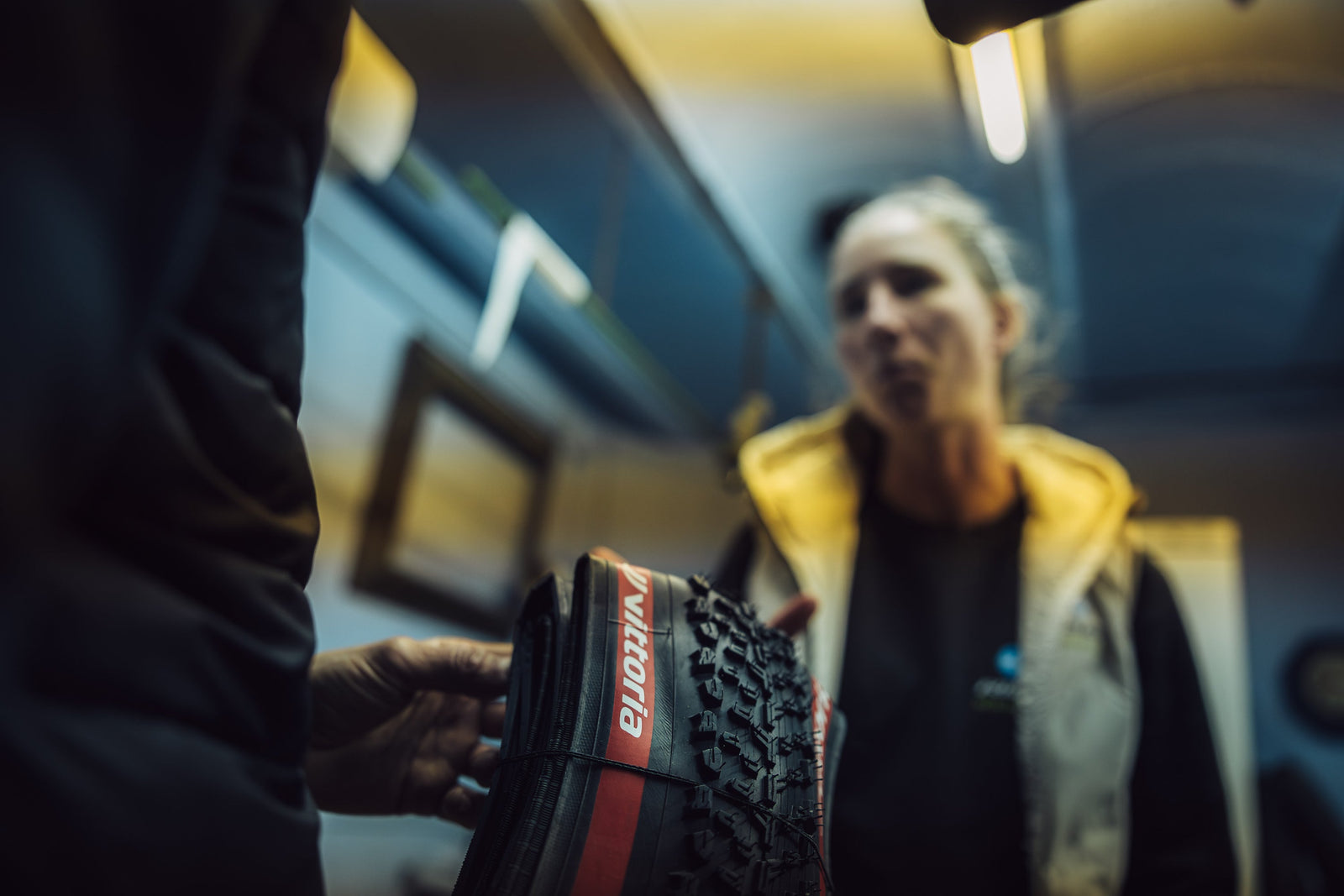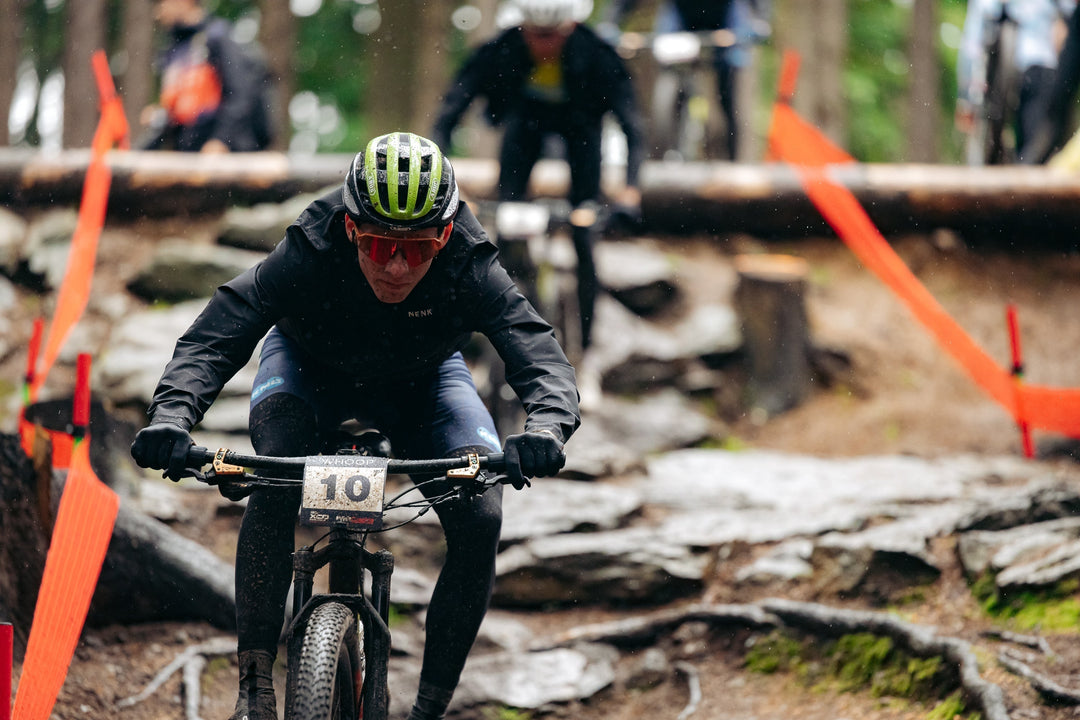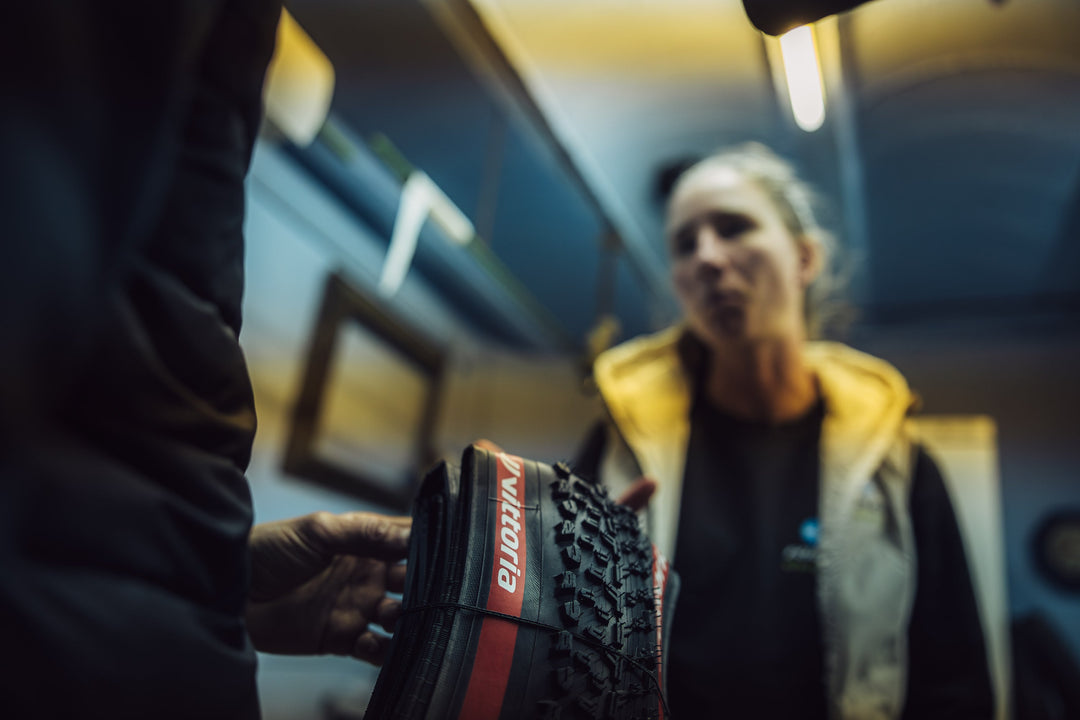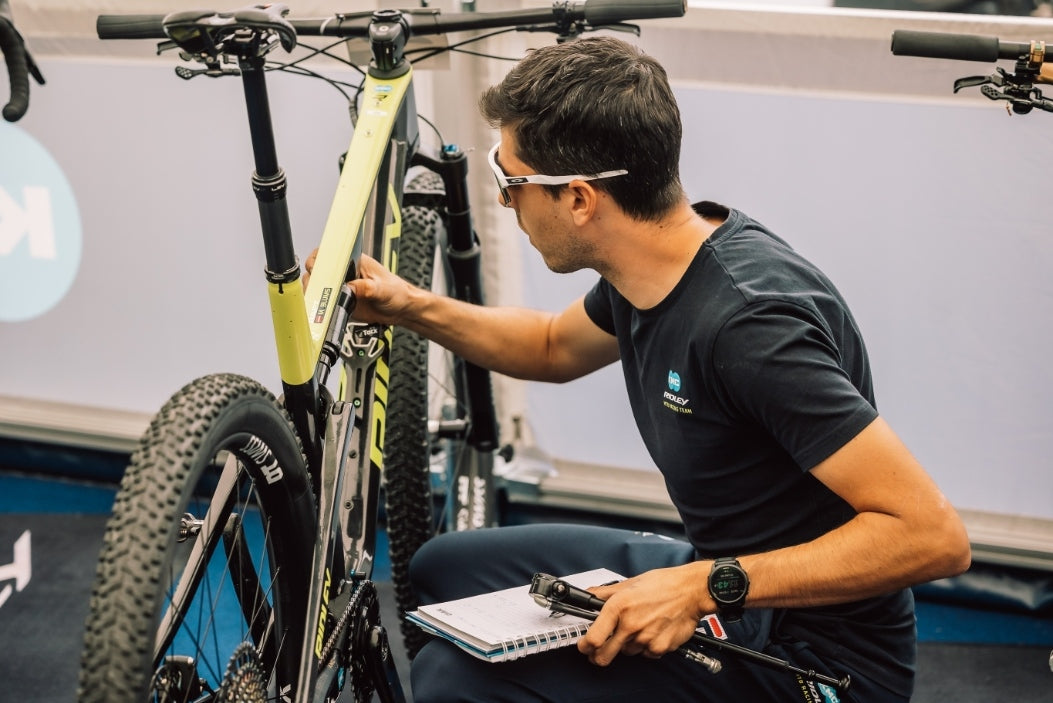The guide to choosing the right tire for XCO or Marathon racing

Photos credit: KMC Ridley MTB Racing Team/ Piotr Staron
As a pro bike mechanic, I've seen firsthand how much of a difference the right tire can make, especially in the demanding world of XCO (Cross-Country Olympic) racing. We put tires through their paces, testing different compounds –hard, medium, soft, and super soft – throughout the racing season, constantly searching for that competitive edge. Our experience goes beyond just feel; we use data acquisition and rigorous testing protocols to quantify the impact of tire choice together with our sponsor.
Tires: Your first point of contact – and your key to victory
It's easy to overlook, but your tires are your bike's first point of contact with the ground, they are kind of suspension. In XCO, where every second counts, the right tire choice can be the difference between a podium finish and top 10. As we discussed in a previous post about tire pressure (always check it before every ride!), even a small change can dramatically affect your handling and rolling resistance.
The Blind Test Revelation: Tire pressure and suspension synergy

To illustrate this, consider our blind testing procedure. We've conducted tests where we subtly altered only the tire pressure, without the rider's knowledge. The results were often surprising. Riders thinks that suspension pressure is wrong. They reported unstable bike, hard suspension work, heavy hands and legs, etc. So that's perfect explanation how tire and tire pressure work together with suspension. The tire acts as the initial damping element, influencing how the suspension reacts to the terrain.
The Rider's Dilemma: A trifecta of speed, grip, and durability
XCO, and XCM courses are notoriously challenging, throwing a mix of steep climbs, technical descents, tight corners, and unpredictable terrain at riders. This creates a unique set of demands for tires. Riders are constantly seeking that sweet spot: the fastest tire that still offers enough grip and stability to confidently tackle any obstacle. It's a constant balancing act.
Understanding tire compounds: A Deeper Dive
- Soft Compounds: These are your grip kings. Ideal for technical sections, loose surfaces, and wet conditions. They conform to the terrain, maximizing contact. However, the trade-off is faster wear and increased rolling resistance. Think of these as your "race day" tires when grip is paramount.
- Medium Compounds: The versatile all-rounders. They strike a balance between grip and durability, making them suitable for a wide range of conditions. They're a solid choice for training and races where conditions are variable. They have good balance for side protection and side stiffness.
- Hard Compounds: These prioritize rolling speed and longevity. They're best suited for smoother courses, drier conditions, or when minimizing rolling resistance is the primary goal. They sacrifice some grip for increased efficiency. They have good protection.
The Manufacturer's Challenge: Engineering the perfect tire – A complex equation
This is no easy task for tire manufacturers. They face a complex equation with numerous variables:
- Grip for climbing: You need to be able to put the power down on steep inclines, often on loose or slippery surfaces. The tire needs to bite into the terrain.
- Confidence on descents: You need to feel secure at high speeds, navigating rocks, roots, and drops. Predictable handling is key.
- Stable sidewalls for cornering: You need to be able to lean the bike over without the tire squirming, maintaining traction and control. Sidewall stiffness is crucial here.
- Flexible sidewalls for damping: You want the tire to absorb bumps and vibrations, reducing rider fatigue and improving control. A supple sidewall enhances comfort and traction.
- Fast rolling: You want to maintain speed with minimal effort, crucial for long races and maximizing efficiency. Tread pattern and compound play significant roles.
- Puncture Resistance: XCO courses are notorious for flats. A durable tire with good puncture protection is essential. Technologies like reinforced sidewalls and puncture-resistant belts are vital.
- Weight: Every gram counts in racing. Lighter tires accelerate faster and improve overall bike handling. Tire construction and material choices are critical.
Tire Pressure: The fine-tuning secret – beyond the numbers
Finding the right tire pressure is crucial. It's not just about following a chart. It's about feel and experimentation. Too high, and you'll lose grip and comfort, bouncing off obstacles. Too low, and you risk pinch flats (snakebites) and increased rolling resistance. Consider your weight, riding style, the specific course conditions (dry, wet, rocky, smooth), and even the width of your rims. Small adjustments can make a big difference.
Tire width and tread patterns: Choosing the right combination
- Width: Wider tires offer a larger contact patch, resulting in more grip and comfort, especially on rough terrain. However, they can be heavier and might feel sluggish on smoother sections. Narrower tires roll "faster" and are lighter, but sacrifice some stability and grip. But after all tests, results showing us different picture- wider tire can be faster!
- Tread Pattern: Aggressive knobs (tall and widely spaced) provide maximum grip in loose conditions (mud, loam), but create more rolling resistance on hardpack. Smoother patterns (smaller, closely spaced knobs) roll faster on hardpack but lack grip in loose conditions. Many XCO tires use a combination – a fast-rolling center tread with more aggressive side knobs for cornering grip.
Conclusion
Choosing the right tire is a crucial decision for any racer. It's a complex balance of factors, and manufacturers work hard to create tires that meet the extreme demands of this discipline. By understanding your needs, the course characteristics, and the nuances of different tire technologies, you can find the perfect setup to maximize your performance on the racecourse. Don't be afraid to experiment and find what works best for you.
Please leave us a comment and tell us what you want to read next!






Pozdrav bilo bi super kad biš napravio neki jednostavan vodić kroz setup suspenzije…sa nekim praktičnim konkretnim savjetima za fox, rockshox i DT. Hvala. Sve pohvale tebi na tvom radu!!!
Leave a comment